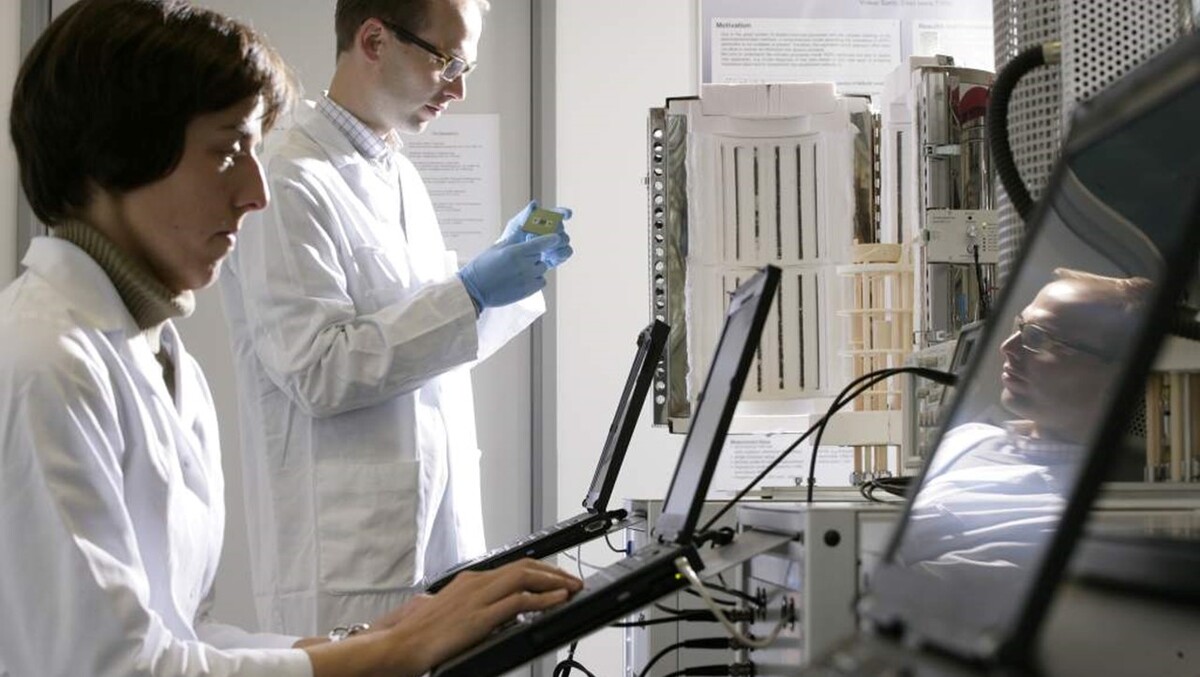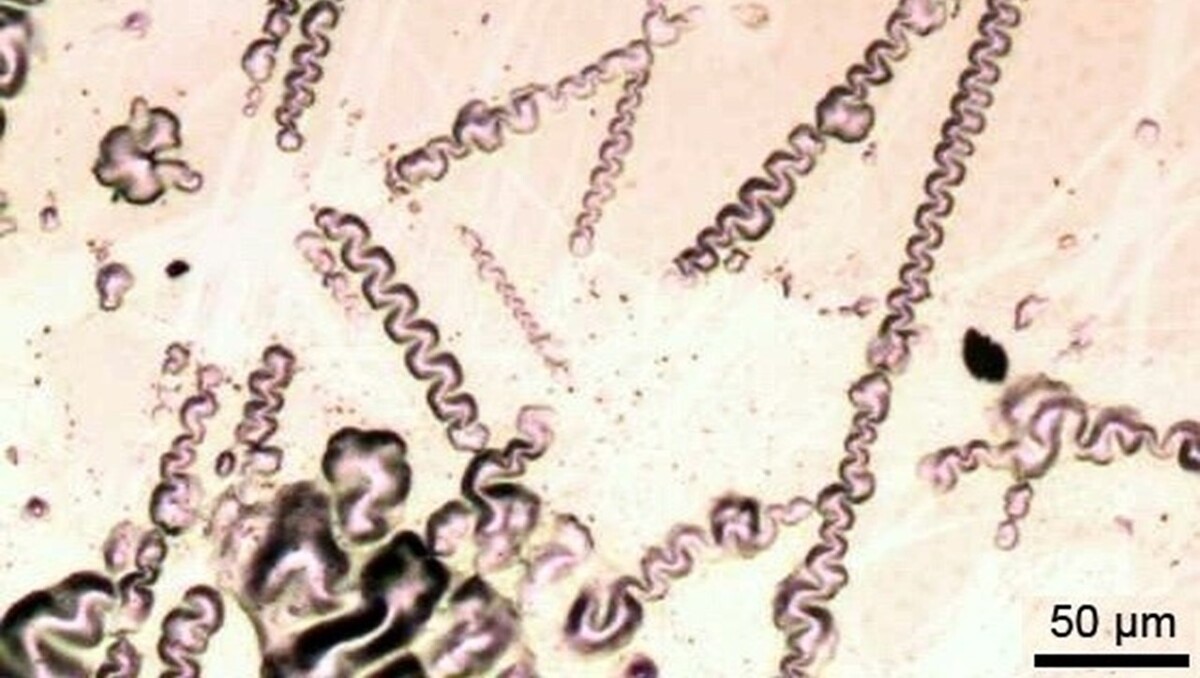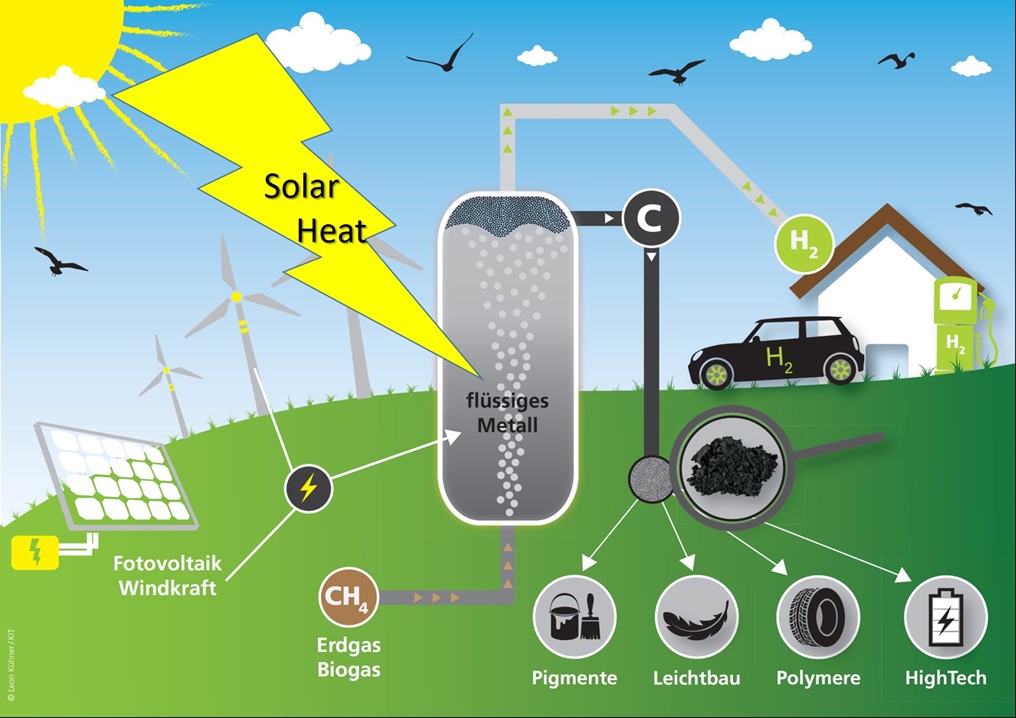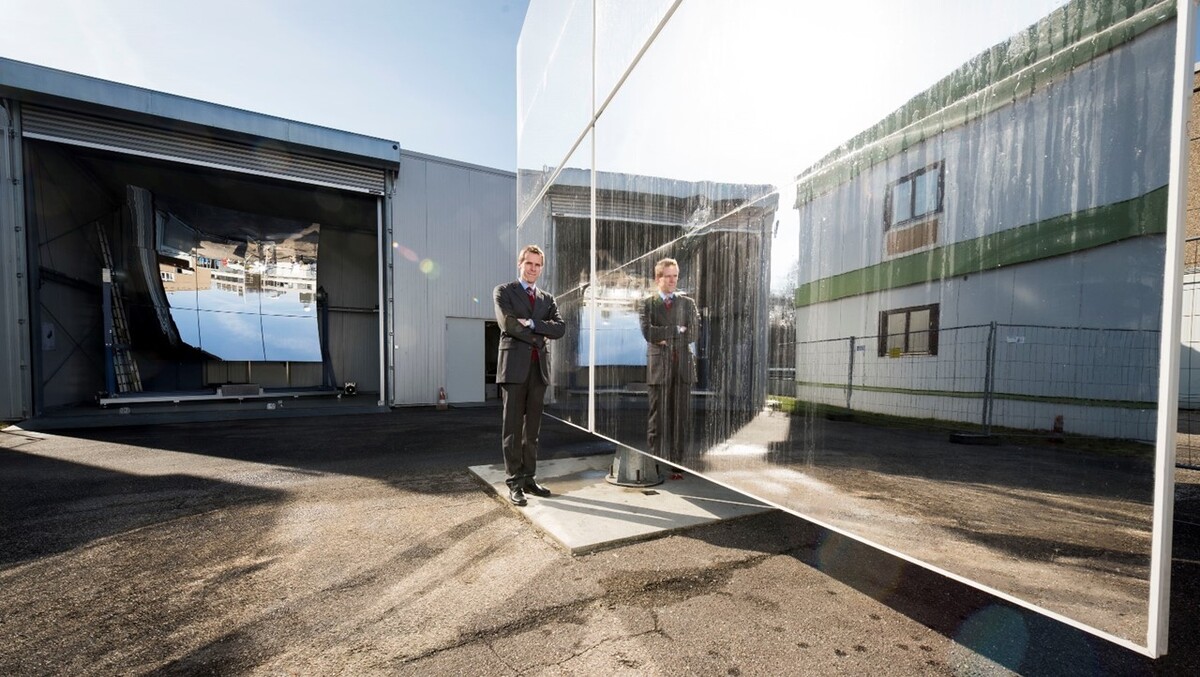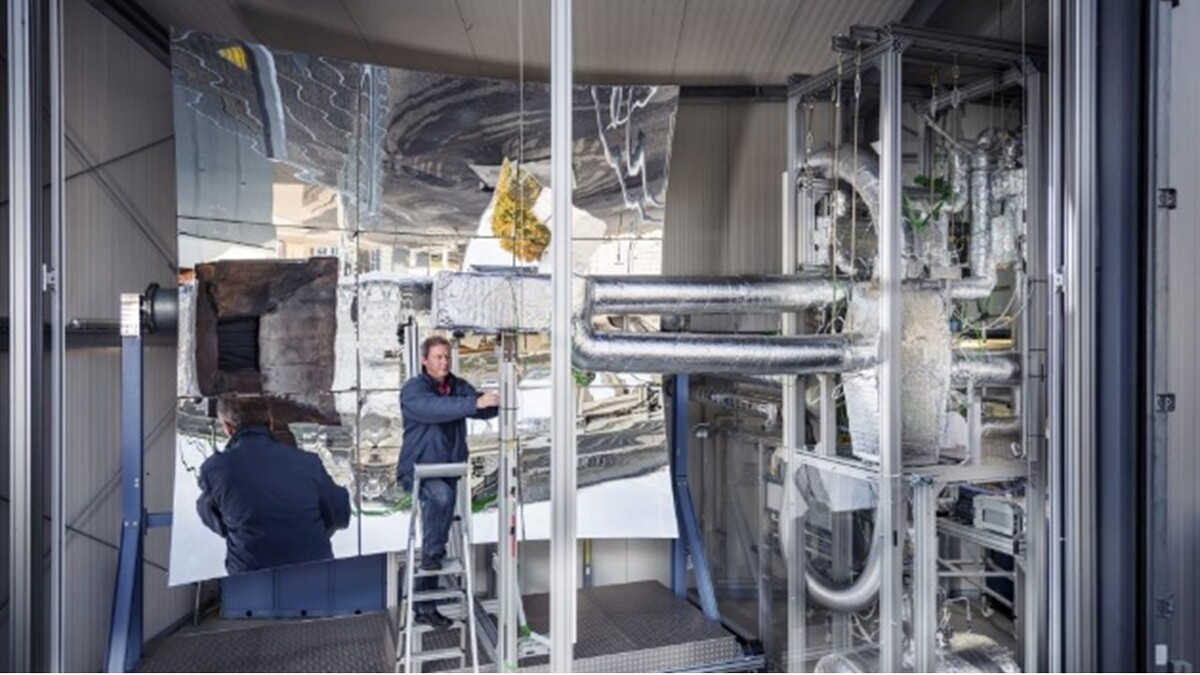As a powerful natural energy source, the sun provides abundant energy that is converted into hydrogen, also called solar hydrogen, through different technological routes.
Solar Hydrogen - Pure & Compressed
Project of the Helmholtz Innovation Pool
Duration: 01/2021 - 12/2024
KIT Contact: Prof. Dr. Thomas Jordan, Dr. Bernhard Schäfer
More information on the research highlight on Helmholtz Energy - Solarer Wasserstoff
The project aims to provide essential scientific knowledge and viable technologies for the conversion of solar energy into hydrogen. The technologies explored in the project will enable the production of solar hydrogen with the highest possible purity and at a pressure well above normal pressure
Hydrogen with these properties can be used in high-value applications (e.g., to power a PEM fuel cell or for chemical and e-fuel production). Technologies that can use solar energy to provide high-purity and compressed hydrogen at very low cost in the future can make a significant contribution to the design of a sustainable energy system in Germany and worldwide.
KIT scientists work on the following topics:
- Production
- Applications
- Interactions of materials and hydrogen (IAM-WK)
The KIT contributions are divided into three subprojects dealing with
- electrolysis in solid oxide cells,
- pyrolysis of methane - or biogas - and
- purification processes.
Pressure and safety aspects are treated cross-sectionally.
The IAM-ET (Cedric Großelindemann, Dr.-Ing. André Weber, Prof. Ulrike Krewer) characterizes and models reversible solid oxide cells. The focus is on the pressure dependence of the electrochemical processes in the cell. The research results allow to design high-temperature electrolyzers more efficiently for pressurized operation and to increase their lifetime. In close cooperation with the FZJ, investigations are carried out on oxygen ion as well as proton conducting cells.
Concentrated solar heat can be used efficiently to heat the liquid metal reactor developed at ITES (Dr. Leonid Stoppel, Prof. Thomas Wetzel). In the reactor, methane is pyrolytically decomposed into hydrogen and easily separable carbon. In this project, the influence of pressurized operation on efficiency and product purity will be investigated. An existing cooperation with HZDR for modeling this multiphase system is to be expanded here, combined with own contributions from ITES (Prof. Thomas Jordan), also for safety assessment.
State-of-the-art material aspects and innovative catalysis concepts for the purification and application of hydrogen are investigated at the IAM-WK (Dr. Korneychuk, Prof. Astrid Pundt) in collaboration with HZB and FZJ.
All production paths investigated in the project produce solar hydrogen with different qualities in terms of pressure and purity. Under the leadership of the IKFT (Dr. Stephan Pitter, Prof. Jörg Sauer), the KIT is analyzing the purity criteria required for each of the different potential applications of hydrogen - from energy conversion in a fuel cell to industrial use, e.g. for the production of synthetic fuels or LOHCs.
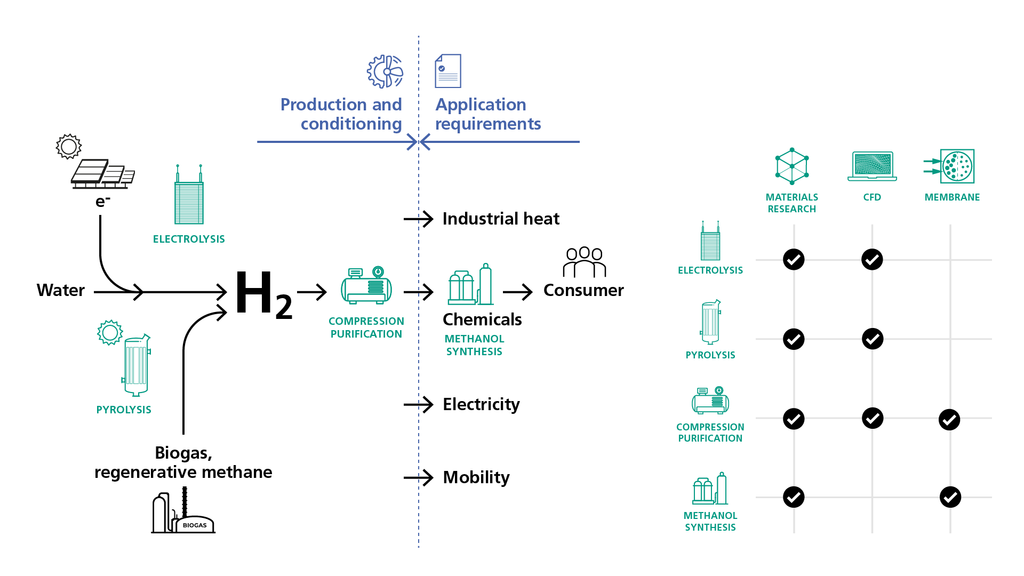
4 Young Reseacher of 4 KIT institutes present their results, in cooperation with industries & Helmholtz partners in the framework of the Solar H2 project on 12 April. Congratulations!
Innopool Solar H2 website @KIT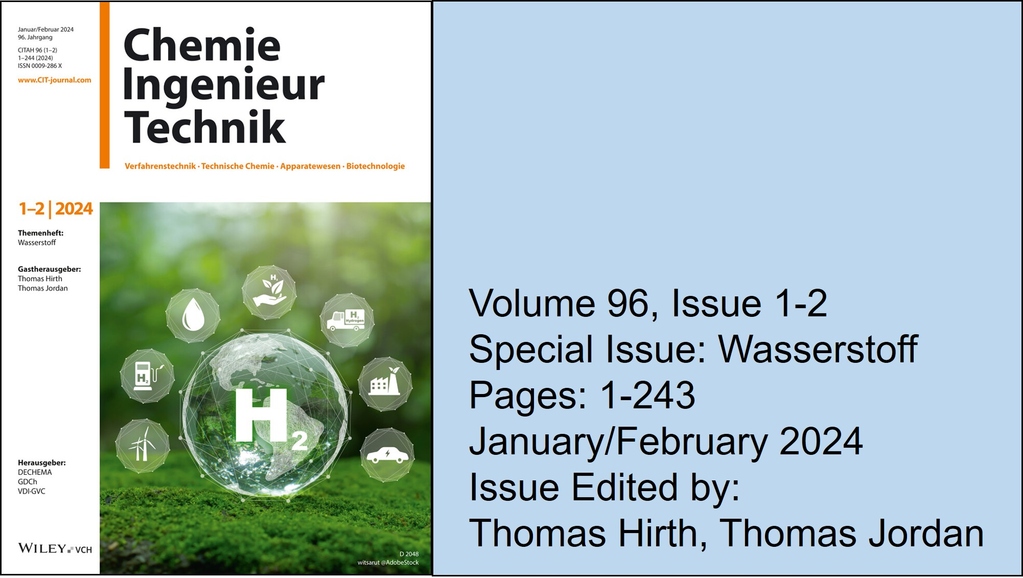
was edited by Thomas Hirth and Thomas Jordan with contributions on pyrolysis of Hydrocarbons, LOHC and perspectives in the chemical value chains and offshore power-to-X systems, among others...
Open Access @onlinelibrary.wiley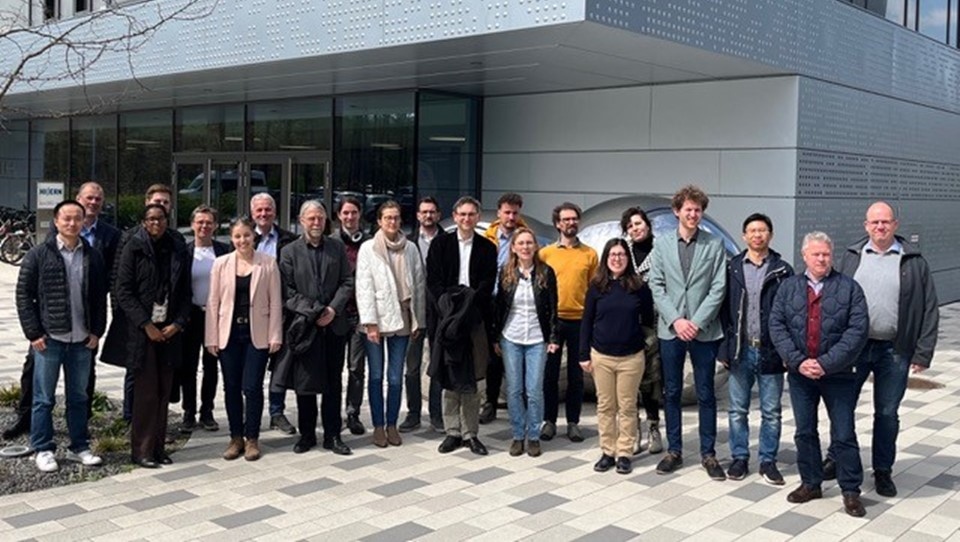
The Helmholtz Innovation Pool project aims to provide essential scientific knowledge and viable technologies for the conversion of solar energy into hydrogen with the highest possible value for a sustainable energy system.
Read more @HI ERN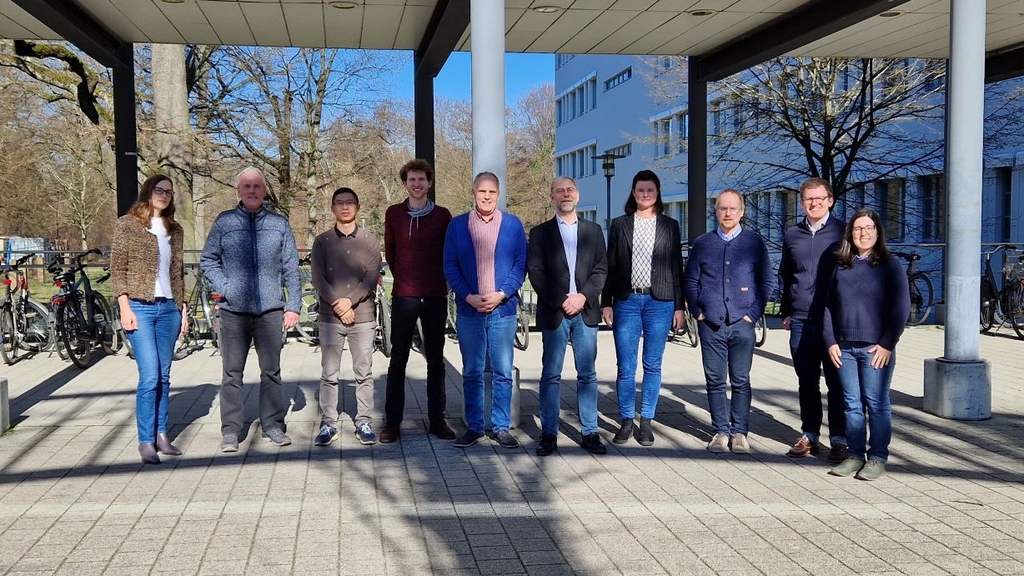
focused on high temperture Solid Oxide Electrolysis under high pressure. A test bench extension for pressurized testing was presented and results discussed.
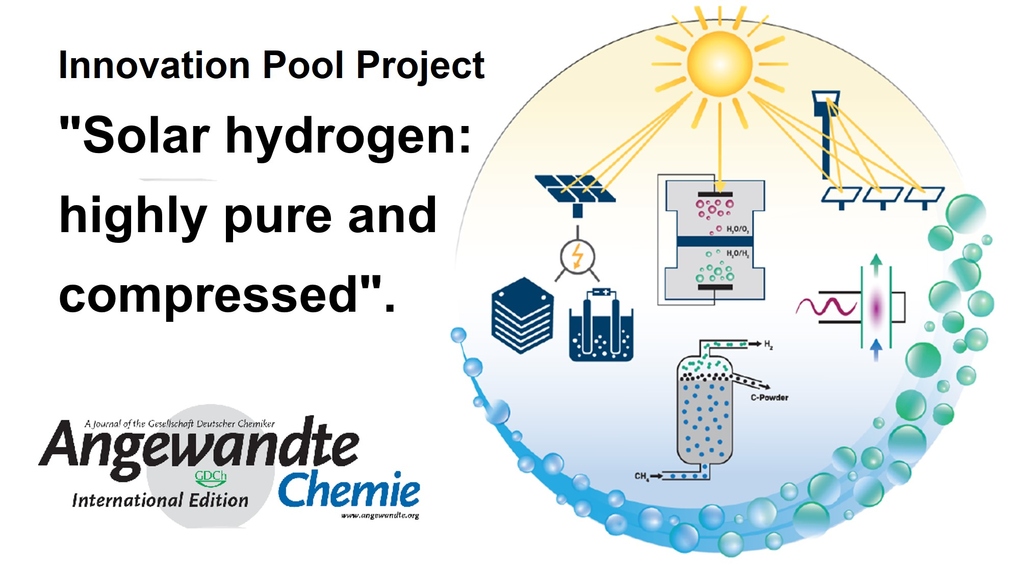
...highlights the technologies involved in the pathways for producing compressed and high-purity hydrogen from solar energy & states the status about the status quo of technologically achievable H2 purity & pressure levels.
Read Open Access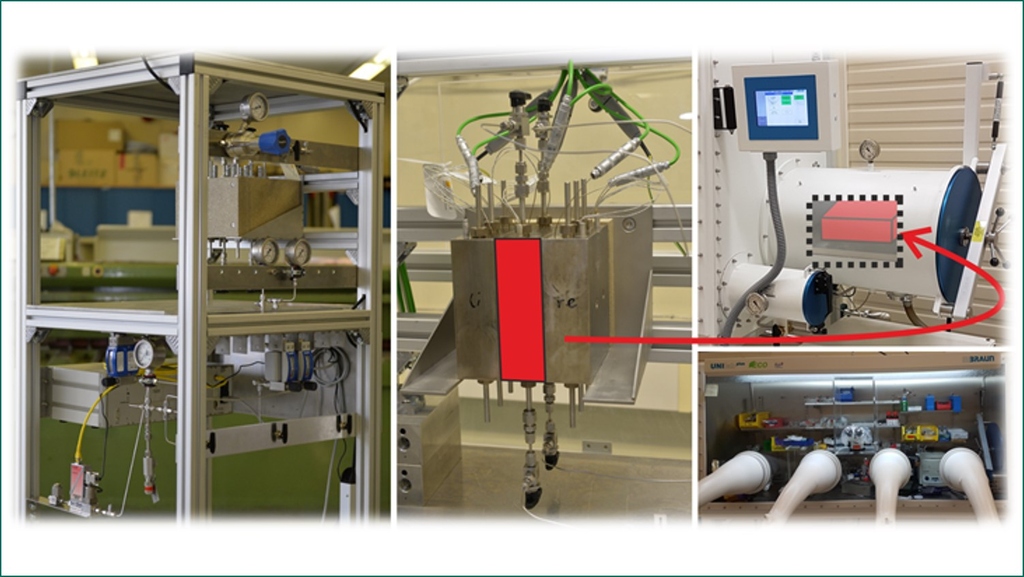
focused on "Hydrogenation processes for PtL processes" at IKFT. A highlight was the new parallel experimental setup to study the deactivation of catalysts in reactions with H2 of different qualities.
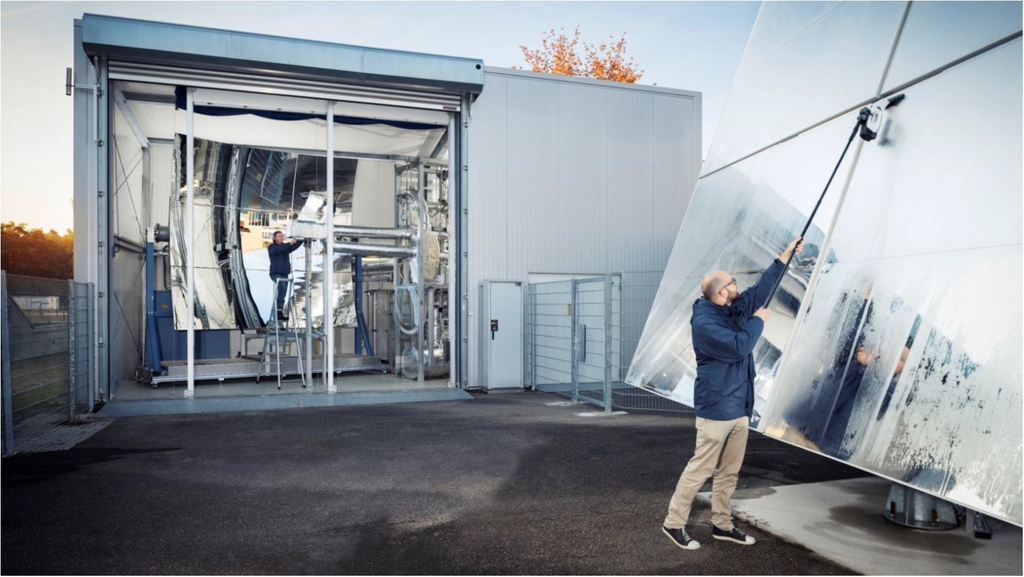
On May 6, 2022, the KIT status workshop with focus on "Solar Hydrogen Production via Solar Pyrolysis" and "CFD modeling of Pd based membrane for hydrogen purification" took place at ITES.
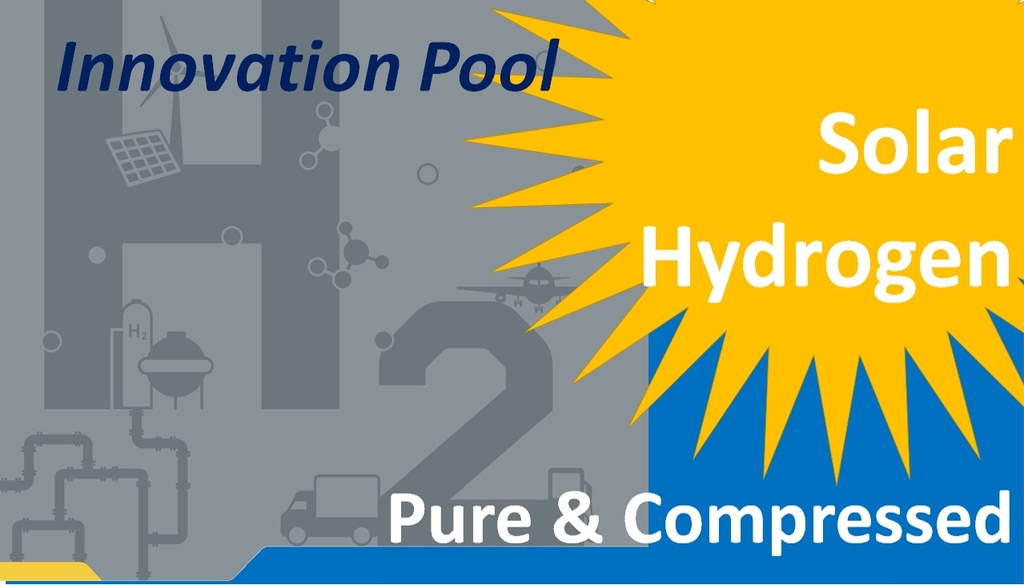
On October 8, 2021: Presentation and discussion of initial results since the start of the project and the methods and experiments used in an online meeting.
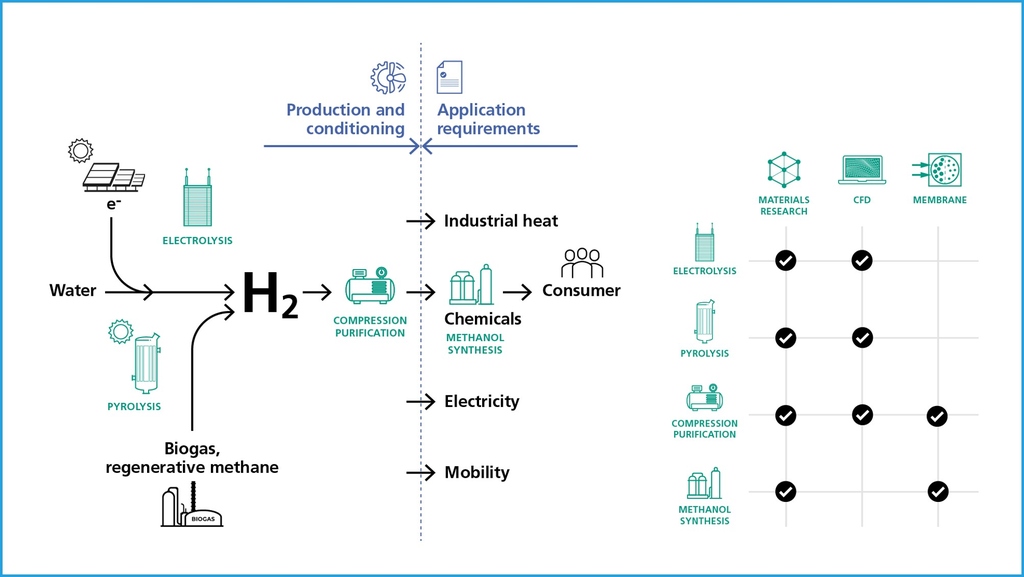
Status meeting of scientist of the participating centers DLR, FZJ, HZB, KIT and IPP took place on November 22, 2021
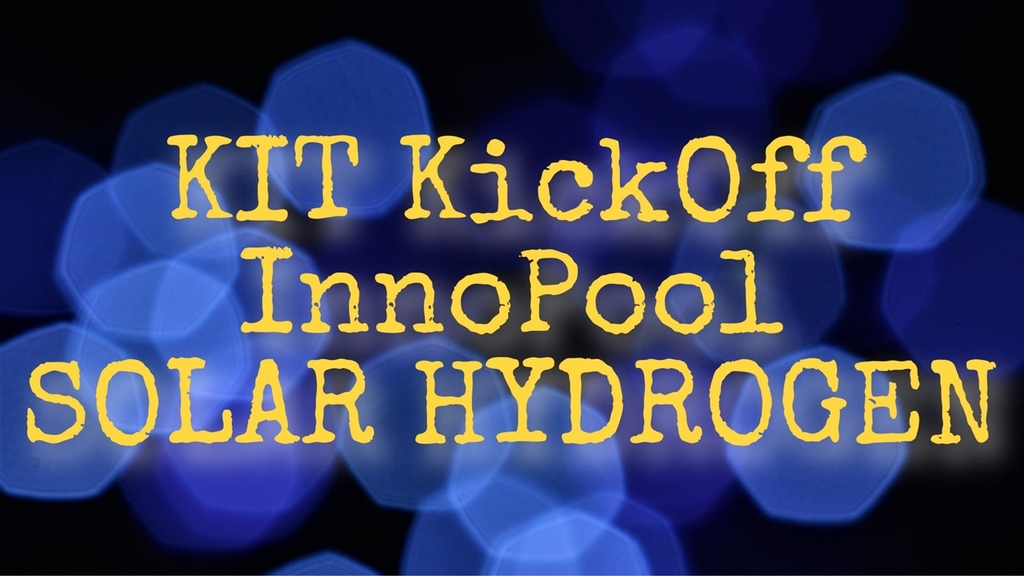
KIT scientists jointly coordinate the contributions in the research project to successfully investigate solar-based production routes of H2 with respect to pressure & purity for various applications.
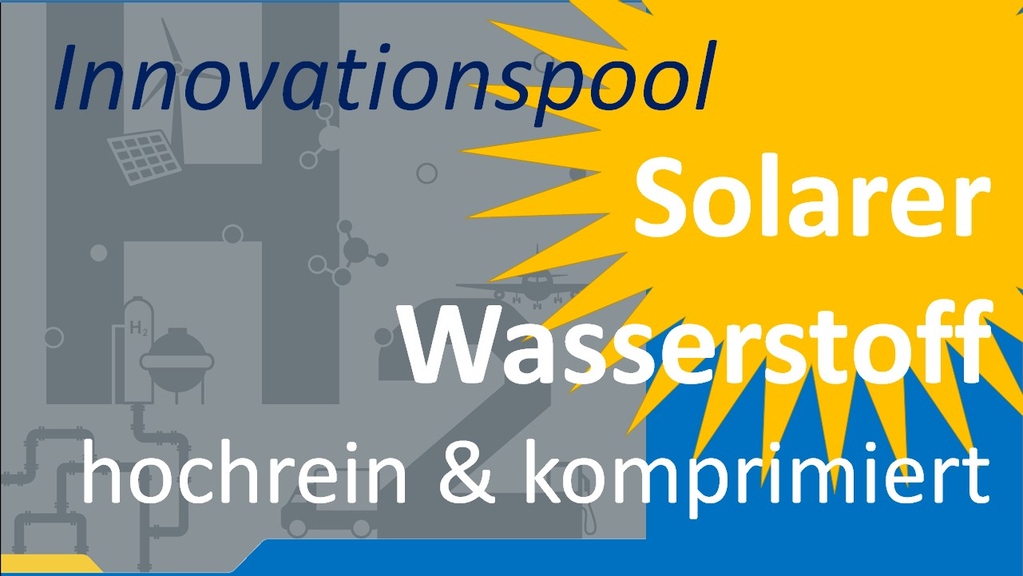
KIT scientists & Helmholtz colleagues are jointly investigating solar-based production pathways of H2 regarding required pressure & purity of various applications.
Publications
From Atmospheric to Pressurized Solid Oxide Cells. PhD dissertation
2025, October 7. Karlsruher Institut für Technologie (KIT). doi:10.5445/IR/1000185405
In-situ TEM reduction of a solid oxide cell with NiO/YSZ fuel electrode
2025. Journal of Power Sources, 625, 235626. doi:10.1016/j.jpowsour.2024.235626
Testing of Pressurized Solid Oxide Single Cells
2025. 19th International Symposium on Solid Oxide Fuel Cells (SOFC 2025), Stockholm, Sweden, July 13–18, 2025
1D Gas Channel Modeling for SOFC Performance Analysis in Aviation
2025. 19th International Symposium on Solid Oxide Fuel Cells (SOFC 2025), Stockholm, Sweden, July 13–18, 2025
Pressurized Testing and Modeling of Solid Oxide Cells
2025. 21st Symposium on Modeling and Experimental Validation of Electrochemical Energy Technologies (ModVal 2025), Karlsruhe, Germany, March 11–12, 2025
Evaluation of Cell Housing Designs for Pressurized Testing of Solid Oxide Single Cells
2025. 21st Symposium on Modeling and Experimental Validation of Electrochemical Energy Technologies (ModVal 2025), Karlsruhe, Germany, March 11–12, 2025
Research data of the publication: Comparison of a solid oxide cell with nickel/gadolinium-doped ceria fuel electrode during operation with hydrogen/steam and carbon monoxide/carbon dioxide
2025, July 1. doi:10.35097/ugngxz9fwp7pkjb7
Research data of the publication: Impact of CeCo-Coated Metallic Interconnectors on SOCs Towards Performance, Cr-Oxide-Scale, and Cr-Evaporation
2025, July 1. doi:10.35097/0hazr8b105qdx3xd
Pressurized single cell testing of solid oxide cells
2024. Journal of Power Sources, 614, Art.-Nr.: 234963. doi:10.1016/j.jpowsour.2024.234963
Reversible and Irreversible Structural Changes in Cu/ZnO/ZrO₂ Catalysts during Methanol Synthesis
2024. ACS Applied Materials & Interfaces, 16 (7), 8813–8821. doi:10.1021/acsami.3c17383
Regenerativ erzeugter Wasserstoff – Perspektiven in chemischen Wertschöpfungsketten [Regeneratively Produced Hydrogen – Perspectives in Chemical Value Chains]
2024. Chemie Ingenieur Technik, 96 (1-2), 100–113. doi:10.1002/cite.202300221
Testing of Pressurized Solid Oxide Cells
2024. 16th European SOFC & SOE Forum (EFCF 2024), Lucerne, Switzerland, July 2–5, 2024
Testing of Pressurized Solid Oxide Cells
2024. 16th European SOFC & SOE Forum (EFCF 2024), Lucerne, Switzerland, July 2–5, 2024
Testing of Pressurized Solid Oxide Cells
2024. 16th European SOFC & SOE Forum (EFCF 2024), Lucerne, Switzerland, July 2–5, 2024
Testing of Pressurized Solid Oxide Cells
2024, July. 16th European SOFC & SOE Forum (EFCF 2024), Lucerne, Switzerland, July 2–5, 2024
Pressurized Single Cell Testing of Solid Oxide Cells
2024, June 28. doi:10.35097/1971
Technological Pathways to Produce Compressed and Highly Pure Hydrogen from Solar Power
2023. Angewandte Chemie International Edition, 62 (32). doi:10.1002/anie.202218850
In-situ TEM reduction of a solid oxide cell with NiO/YSZ fuel electrode
2023. FEMS Euromat (2023), Frankfurt am Main, Germany, September 3–7, 2023
In-situ TEM reduction of a solid oxide cell with NiO/YSZ fuel electrode
2023. IMC20 -20th International Microscopy Congress (2023), Busan, South Korea, September 10–15, 2023
From Ideal to Stack-like Contacting of an SOC
2023. 18th International Symposium on Solid Oxide Fuel Cells (SOFC 2023), Boston, MA, USA, May 28–June 2, 2023
Green methanol from renewable feeds : Towards scalable catalyst synthesis and improved stability
2023, March 15. 56. Jahrestreffen Deutscher Katalytiker (2023), Weimar, Germany, March 15–17, 2023
0-dimensional Performance Modeling of Solid Oxide Cells under pressurized Conditions
2023, March. 19th Symposium on Fuel Cell and Battery Modeling and Experimental Validation (ModVal 2023), Duisburg, Germany, March 21–23, 2023
GASFLOW-MPI analysis on deflagration in full-scale hydrogen refueling station experiments: H2-air premixed cloud and high-pressure H2 jet
2022. International Journal of Hydrogen Energy, 47 (32), 14725–14739. doi:10.1016/j.ijhydene.2022.02.215
Influence of impurities in H2 from different sources on the deactivation of methanol synthesis catalyst
2022, June 30. Curiosity - A French German Young Chemists Conference (2022), Mulhouse, France, June 30–July 1, 2022
Comparison of an SOC with Ni/CGO Fuel Electrode during Operation with H2/H2O and CO/CO2
2022, July. 15th European SOFC and SOE Forum (EFCF 2022), Lucerne, Switzerland, July 5–8, 2022
Experimental Characterization of metallic Interconnectors with potential Probes
2022, July. 15th European SOFC and SOE Forum (EFCF 2022), Lucerne, Switzerland, July 5–8, 2022
Influence of impurities in H2 from different sources on the deactivation of methanol synthesis catalysts
2022, June 27. 55. Jahrestreffen Deutscher Katalytiker (2022), Weimar, Germany, June 27–29, 2022
Deconvolution of Gas Diffusion Polarization in Ni/Gadolinium-Doped Ceria Fuel Electrodes
2021. Journal of the Electrochemical Society, 168 (12), Art.-Nr.: 124506. doi:10.1149/1945-7111/ac3d02
Deconvolution of Gas Diffusion Polarization in Ni/Gadolinium-Doped Ceria Fuel Electrodes
2021. ECS transactions, 103 (1), 1375–1393. doi:10.1149/10301.1375ecst

